The next giant leap: Interview with 'Deliver Us Mars' game developers
We talk to Koen and Paul Deetman, the founders of KeokeN Interactive about their ambitious new space adventure game, Deliver Us Mars.
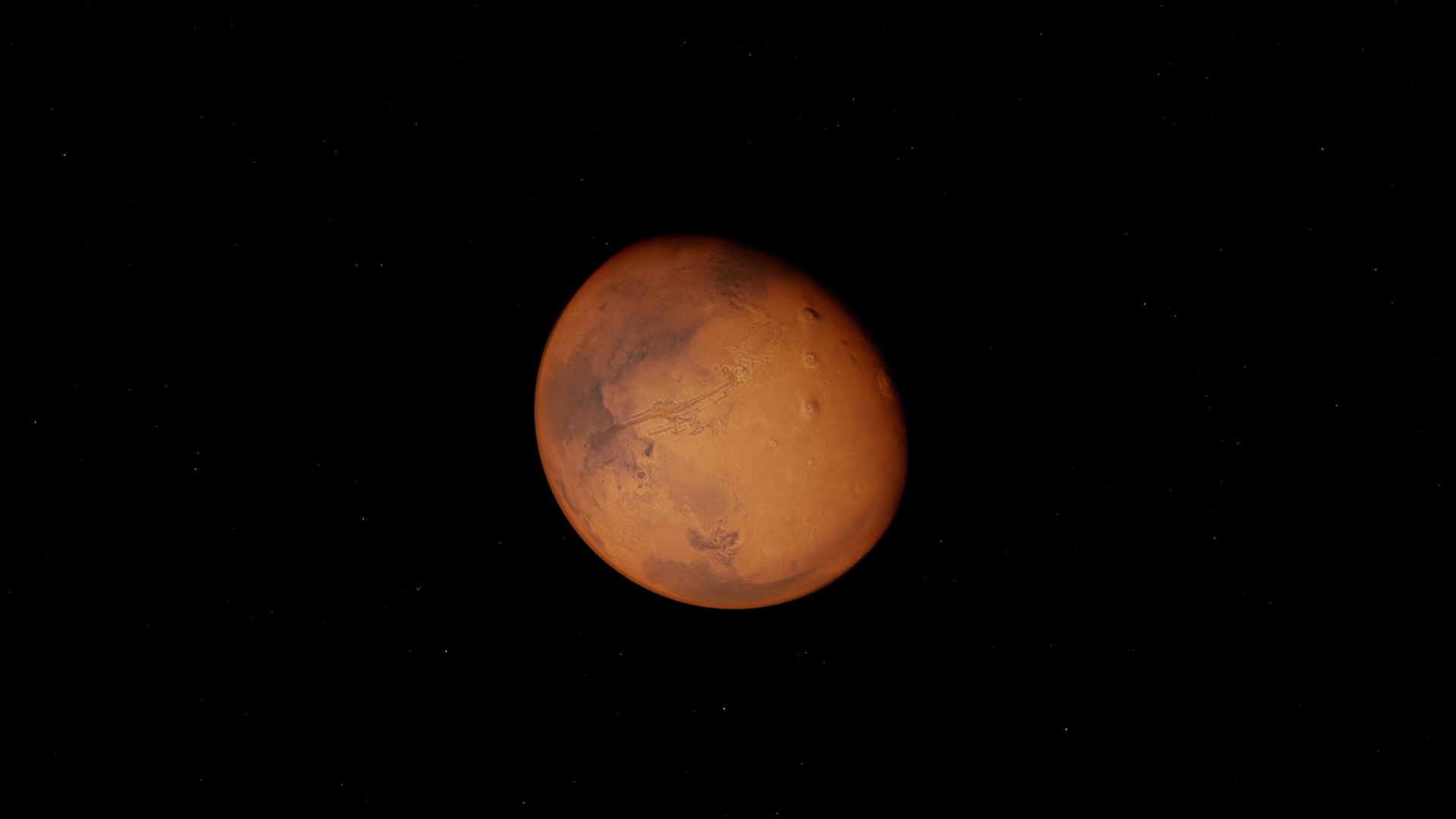
There’s no shortage of space games out there at the moment. A cursory glance at the Xbox Store, PSN, or Steam will reveal a wealth of interstellar adventures - Destiny 2, Guardians of the Galaxy, Halo Infinite, and Elite Dangerous just to name a few. But the overwhelming majority of space games drag us hundreds of years into humanity's future to show us fully fledged interstellar empires and galactic wars. We rarely get a glimpse at what our near future might look like.
Fortunately, there are a few games that try to show a closer and more realistic version of our next steps into the cosmos. We had Moonbase Alpha, a game developed in cooperation with NASA to show what a realistic moon base might look like. Another such hard sci-fi treat was 2018’s puzzle adventure Deliver Us The Moon. Set in a post-apocalyptic future where climate change has ravaged the Earth, the game follows a lone astronaut's mission to the moon to save humanity after its energy supply from the moon mysteriously shuts down.
Deliver Us The Moon was something of an indie success story when it dropped, and a successful stint on Xbox Game Pass further helped it to expand its reach. We actually played through it when it came to Game Pass and thoroughly enjoyed our time with it, uncovering the mysteries of what happened to the lunar colony.
Now, the developers KeokeN Interactive have partnered up with Frontier Foundry, the indie publishing wing of Elite Dangerous developers Frontier Developments, and they're working on an ambitious sequel, Deliver Us Mars. We sat down with the studio co-founders Koen and Paul Deetman to talk about the game, their inspirations and the process of developing a game like Deliver Us Mars.
This interview transcript has been edited for clarity.
What is Deliver Us Mars about?
Space.com: Can you give us an overview of Deliver Us Mars? How does it follow on from Deliver Us The Moon?
Koen Deetman: It sets off ten years after the Fortuna mission, the original mission, and that’s when the Zephyr crew gets a distress call from the planet Mars, or somewhere around it, and that’s where they initially head off on a new rocket sent to Mars. Of course, going back to [what happened in] Deliver Us The Moon, they’re looking to find out where the Arks went - have they ever been to Mars, what actually happened there?
Paul Deetman: It’s good to add that you can play this as a standalone experience. We catch up on everything for people who have not played Deliver us the Moon. We do, of course, encourage you to play it so you get a little bit more of an in-depth experience when starting with Deliver Us Mars.
KeokeN Interactive's origins and inspirations
Space.com: Can you tell us a bit about your backgrounds? We understand that you both come from the entertainment industry, but from different sides of it.
Koen: For both of us we kind of went green into starting up a company in the entertainment business, I think about nine or ten years ago at most. Deliver Us The Moon was our debut game […] I had just done a study of game development, Paul was exactly the same, but then on audio engineering. We worked at a couple of publishers, but not very serious. We just set out and said let’s go.
Paul: We said let’s launch this thing. I think it also comes back from the day when we were recording little home videos like Star Wars or James Bond in our garden - having some fun, cutting the video together, putting some music on it very amatueristically. We even did Scream, the horror movie as well, falling on the ground and stuff.
I think we were very attracted to that because it was like we were making our own comics and stories and books. I guess as kids, in a very playful way, we were already collaborating, just not in a business sense. So, later on we went on separate roads in entertainment, but we found our way back - it was kind of meant to happen and we decided eight or nine years ago that we would really try this out as a company.
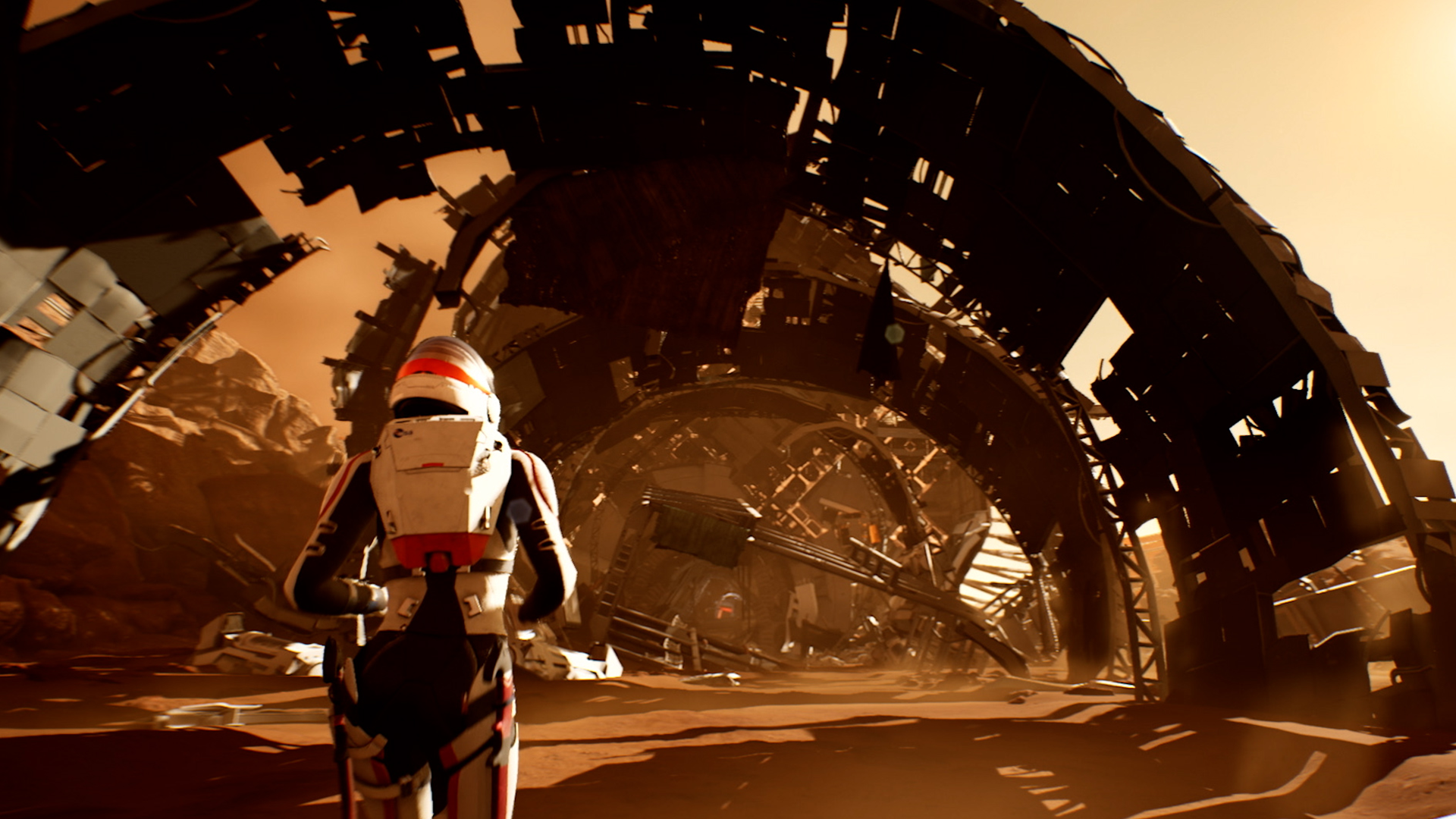
Koen: If you see the games that we create, you can see that Paul did a lot of film and trailer music whereas I crafted more games so logically, there is a kind of cinematic aspect to our games that we’re trying to marry with our game’s mechanics and stories.
And then again, The Netherlands, where we come from, has just one very well known triple A studio called Guerilla Games. Ten years ago, we just set out on that adventures to get that second triple A studio in The Netherlands, but not in the same fashion of course, and now —
Paul: We literally started at the kitchen table. We hijacked a whiteboard from our sister’s room, we flipped open some laptops, and we kind of pretended to know what we were doing and from there on, it never stopped.
Space.com: How has the studio grown since your early days working on Deliver Us The Moon? Has it increased in size significantly working on this project?
Koen: Well, we’ve seen bigger numbers during our Deliver Us Mars development time. So, thinking of the core team of ten people and then ranging up to more like 15 or 20 at bigger peak times, but I would like to say that yes, it substantially grew a little bit with this game, but not to the extent where it starts to look like a triple A studio, or that we’re trying to mimic a triple A studio. To a certain extent, it is a very disruptive way, or I’d maybe say a more efficient way, of crafting these experiences with team members or core members who can sometimes do multiple things and also be handy with development work and the things we do here.
Paul: For Deliver Us The Moon it’s hard to say because there’s always a lot of freelancers as well, but it was 15 people and this was more like 30 people as an average for how many people are working on it. And yeah, what Koen is saying exactly is that we’re trying to do things a little differently, not with a 200-man team. Of course, we’re young, we’re an agile team, we can work with new technologies. Unreal Engine especially helps a lot to push things into the high fidelity graphics that we want, without having to use a team of a hundred people for it.
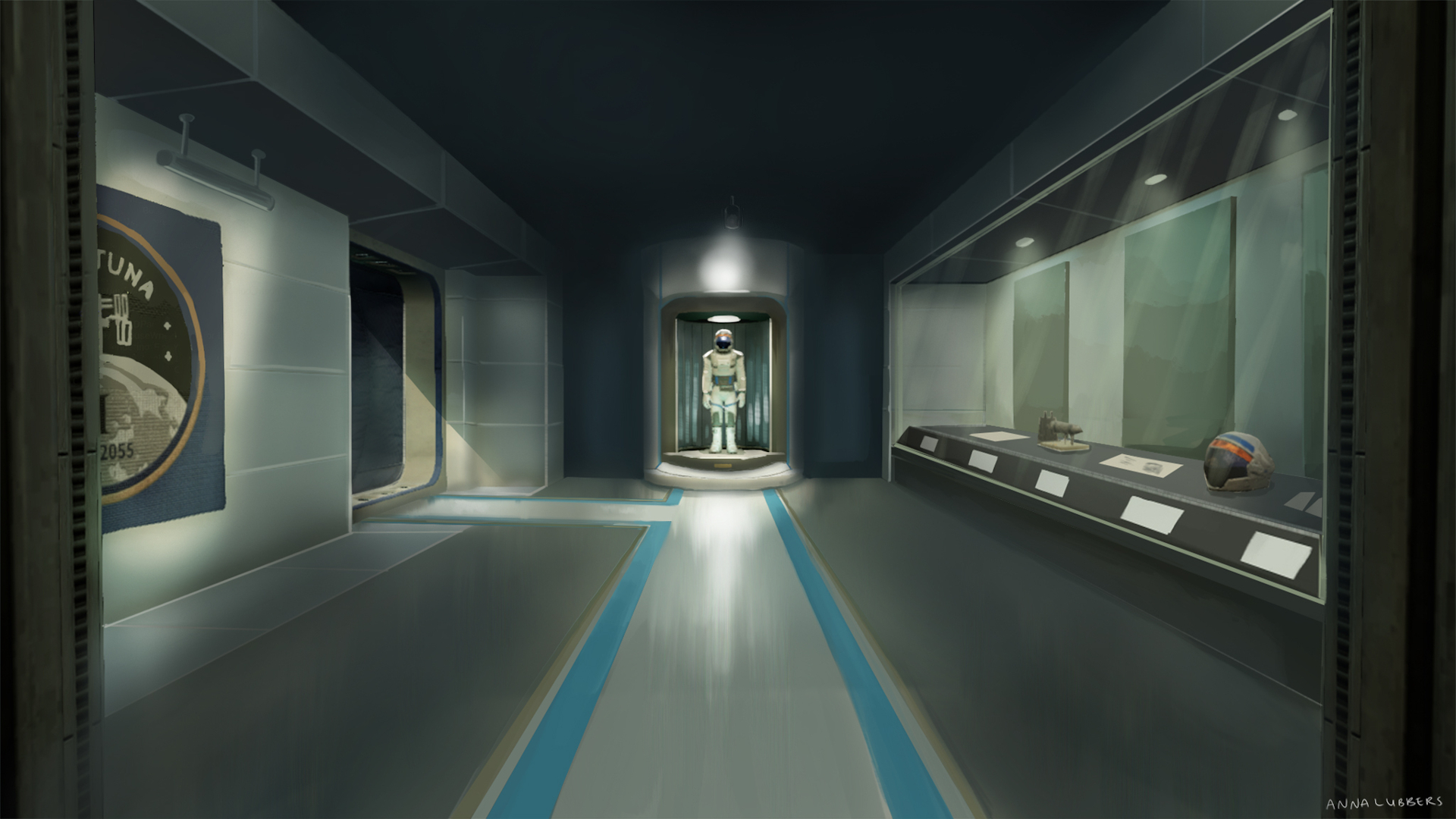
Space.com: What made you partner up with Frontier for this project?
Koen: We really started off with having these bigger ambitions. KeokeN has this trait of trying to push boundaries here and there, and especially with somewhat of a lack of resources. I think when we were looking at this project and the step up we wanted to do, Frontier sounded like a very fitting partner in this case, especially knowing that they have a lot of sci-fi enthusiasts and background there. It felt like a very good fit actually.
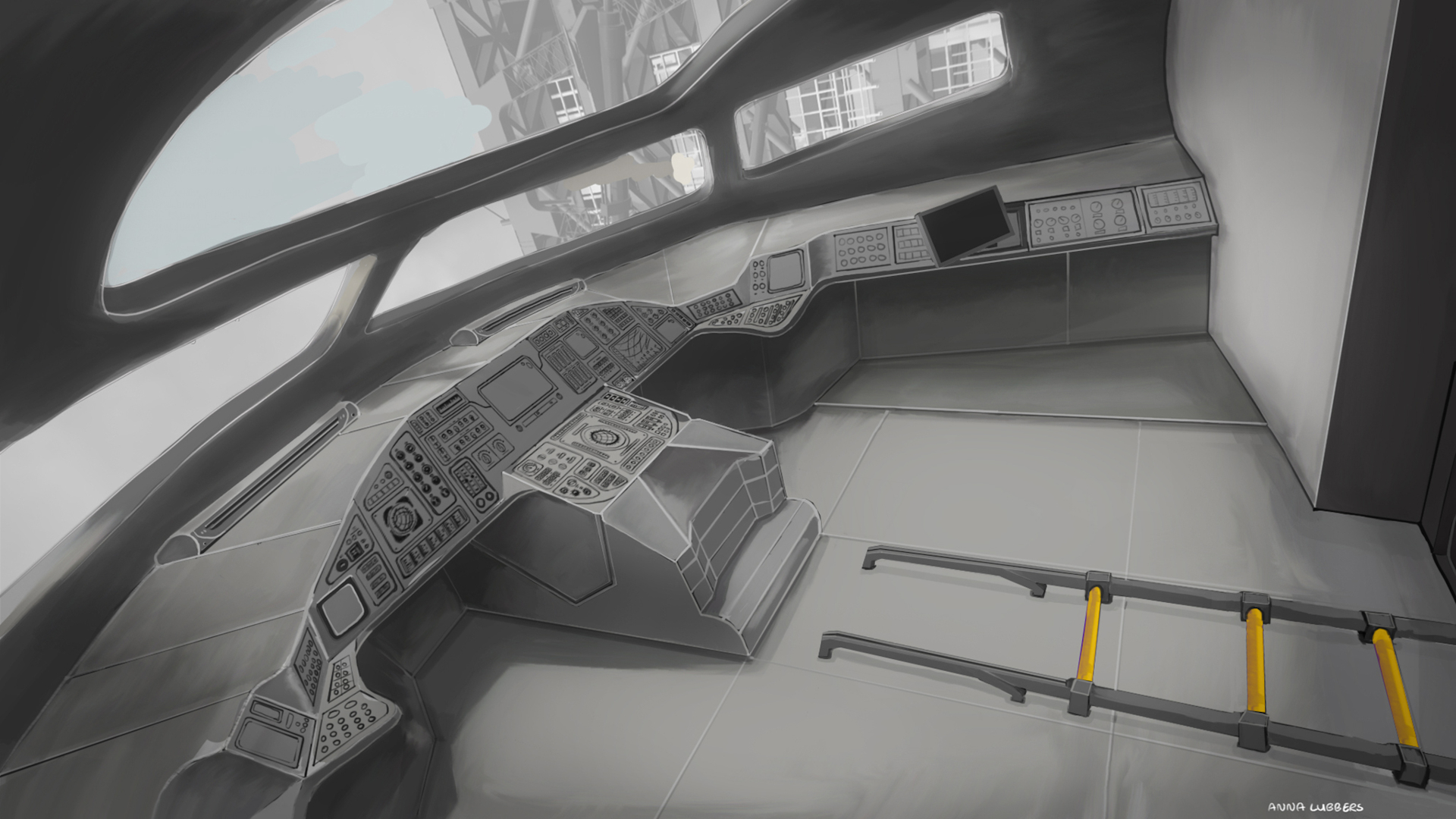
Space.com: And what has this partnership with Frontier allowed you to do that you couldn't do on your own?
Paul: As a developer you’re always afraid to lose creative freedom. I think with Frontier we have a very organic and very open relationship - very transparent, so anything we bring to the table is in a very collaborative way.
When we are really stuck or when we’re using something that we’ve never done before - especially with this game where we’re really pushing the boundaries of our ambition to say “can we really do this,” Frontier can step in and speak from experience to say “hey guys, maybe you should point in that direction” but without taking over the wheel. Just giving us the right tools and experience to play with. So I think, up to now, it’s been an amazing collaboration.
Koen: As much as you derive from [saying] you just started up from a kitchen table and didn’t know what the hell you’re doing, at some point when you start to work with more professional ways, you start to adapt to these, I won’t say methods, but you’re being pushed in a way that things are being planned far more and you have to pay attention to the right things to make things happen, and Frontier has massively given that.
Paul: It’s especially important with this whole pandemic, everybody’s sitting online [...] there’s this trust, this digital trust that you also need to have with one another. You can’t easily meet and physically look everybody in the eye. We were fortunate enough that we could meet and we could look them in the eye and say “are we on the same page”? Up to now, we’re very happy with how the collaboration has been going.
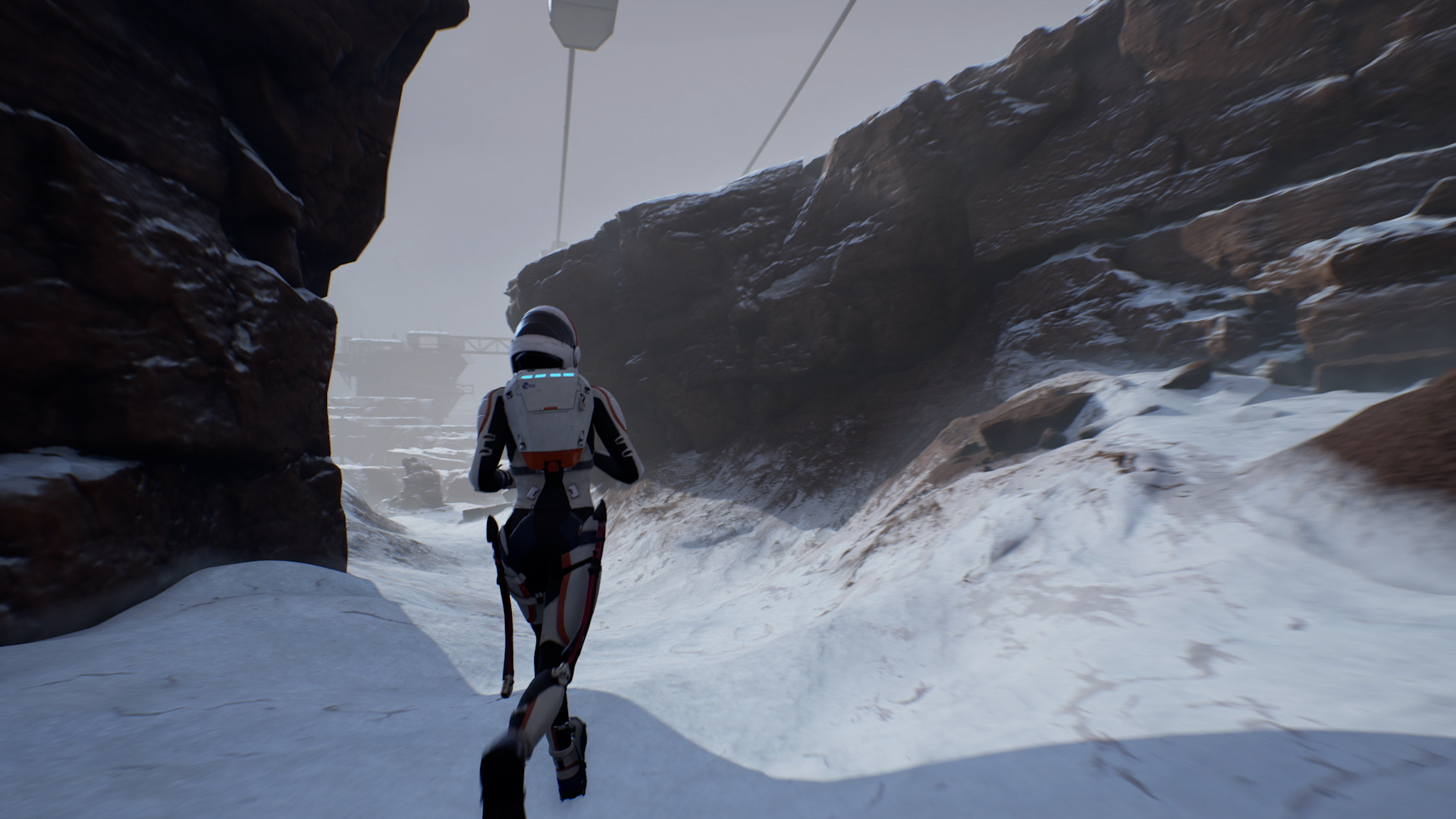
Why space?
Space.com: Going back to the game, why space? And what made you go with a more realistic space game as opposed to something like Star Wars?
Koen: I think somehow space has always been ingrained in our family from very early on. We grew up with it so it felt normal, but our grandad had a lot of telescopes around. He was a telescope builder and there was a very huge one that he crafted himself. When he put that up and he aimed it at the moon, I remember looking - and you had to look from the side, you could not look from the back - you saw the moon and I remember seeing the craters up close. I never forgot that moment.
He showed me Halley's Comet fly by at 2AM in the night, waking up as kids of seven years old. It never moved away from us, and so logically we like movies like Interstellar, Duncan Jones’ Moon, and 2001. I think that the whole more-realistic, hard sci-fi part speaks to us more.
Paul: It really sparked that moment. Of course, we were kids, we thought that every grandpa was a telescope builder. He was also more of a philosopher and a thinker. Looking through that and knowing how small you are as a human being, kind of insignificant when you look at outer space and you see how vast and huge that is. That inspired a little bit of our purpose as well, like why do we do what we do.
By telling a grounded story, we can speak to people with emotional stories about people that also wonder about the universe. So it’s always a little bit of a mix between the groundedness of the emotions between people and families, and then philosophy or what should we do, what’s the next frontier in space?
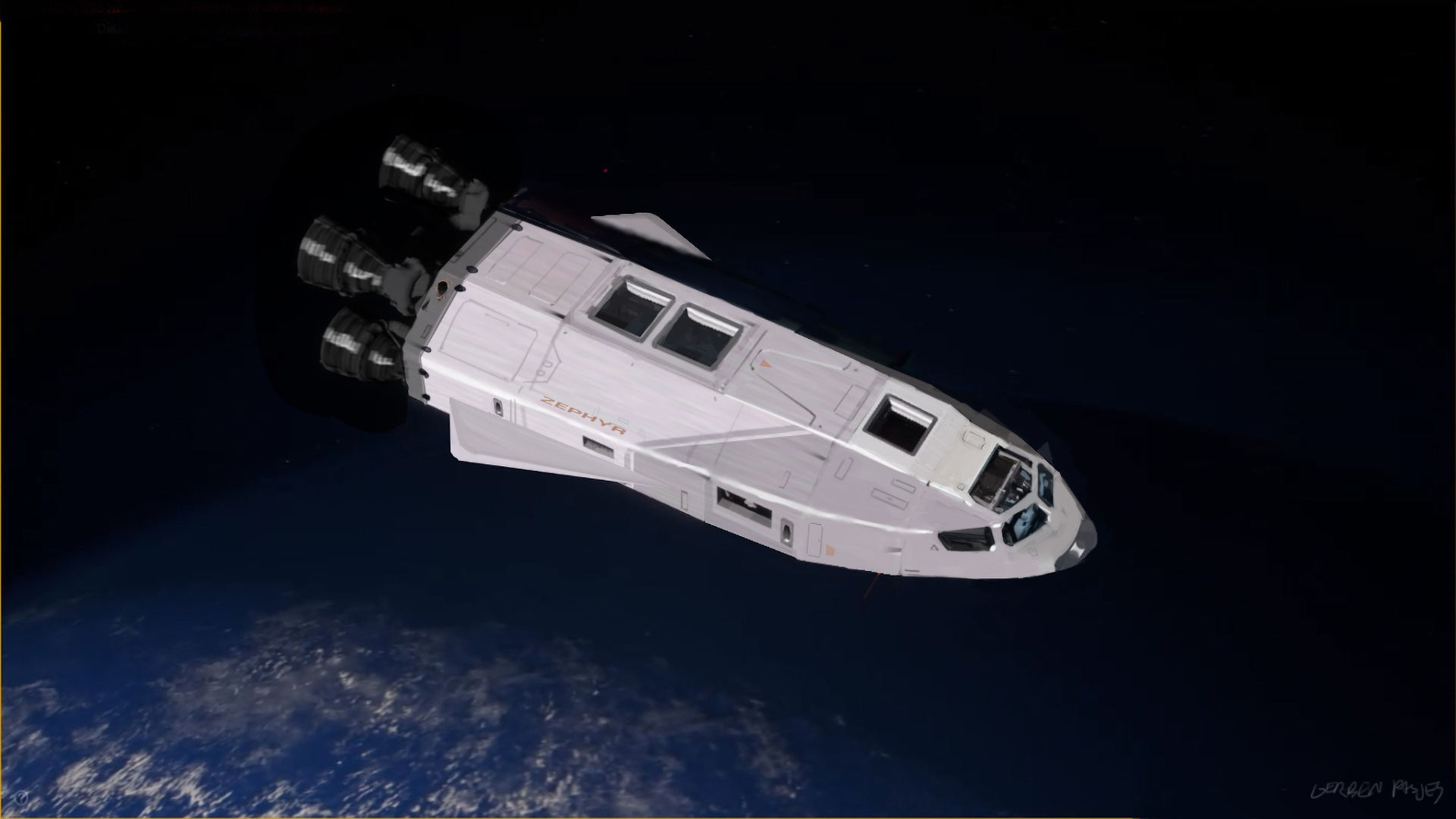
Bigger and better: What's new in the sequel?
Space.com: A lot of the storytelling in Deliver Us The Moon was done via holograms and audio logs, whereas we understand you’ve done a lot of motion capture work on Deliver Us Mars. Does this mean we’ll be meeting other characters up close, talking and interacting?
Koen: We can’t go into detail about characters yet, however, I can definitely say that once we started to tell these stories, and especially with a narrative driven game like Deliver Us The Moon, with Deliver Us Mars we needed to amp up to another level. The possibility of motion capture could bring us a deeper connection to some of these characters that were just crafted as holograms. We could give a lot more details and characteristics to them throughout the game and if we look at how Deliver Us Mars is compared to Deliver Us The Moon, we took a very ambitious step…
Paul: A massive step forward. As you can see with the setup of Deliver Us The Moon, you can already smell that ambition there. That was our debut game, setting the tone for Mars, of course. We love narrative, so anything that could emphasize that and make it even more heartfelt, we used. You can imagine if we used mo-cap, how far we could take that.
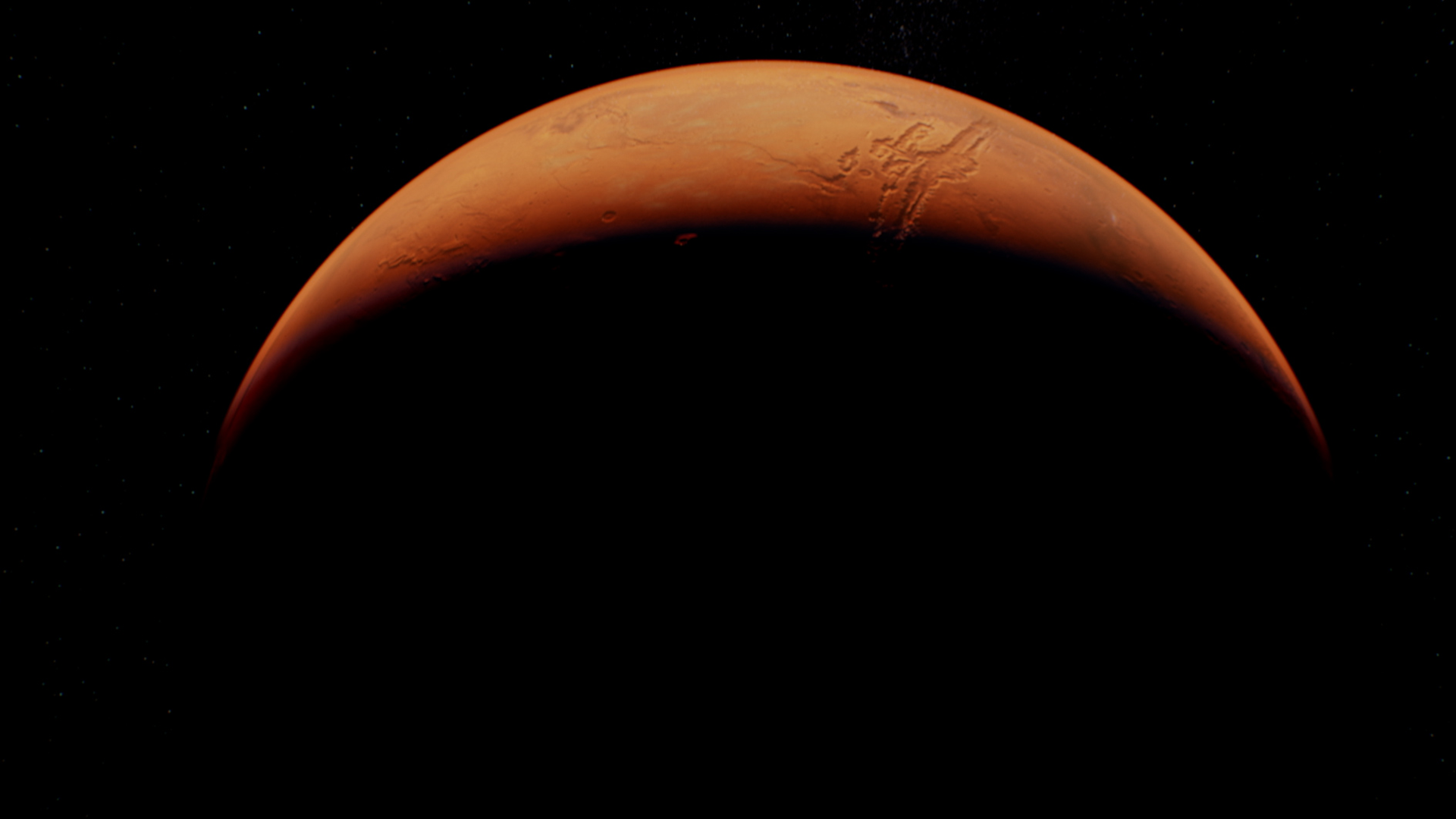
Space.com: Deliver Us The Moon was heavily focused on solving puzzles. Is puzzling and investigation still at the core of Deliver Us Mars and if so, how are you expanding upon that?
Koen: There’s a lot of one offs in Deliver Us The Moon, where if we’d been more efficient, we’d have gotten more mechanical systems woven in there, because we really like the puzzles to be woven into the environment. In Deliver Us Mars you can expect the same, however, it just makes a bit more sense in terms of the puzzles themselves - they’re more engaging and it’s more challenging for you to figure out how you can move through the environment.
Paul: What we tried with Deliver Us The Moon is that we have this play by play, [where you move] from a narrative point to a more gameplay perspective. I think [in Deliver Us Mars] we really emphasize that as well, but even more. It’s not only puzzling, it’s not only environmental hazards that you go through, now we have this whole climbing mechanic to make it a bigger adventure.
That’s something that we sometimes missed in Deliver Us The Moon. We’d say “how can we make that even better, to give that feeling of exploration, to have that feeling of detective work.” So, the things that people liked are there, and we improved and then enhanced it with the climbing.
Koen: There is no violence in Deliver Us The Moon. What’s usually used [to add challenge] is conflict resolution - using violence and killing, and we were literally thinking “how can we put pressure on the player, in a way that’s very exciting and thrilling?” With climbing, you’re literally hanging on, and you should hang on because if you let go, that's the endgame. It’s interesting to see how that brought another layer to the game. And [the climbing mechanic] also battles verticality in a way other than using stairs or elevators.
Paul: If you look at the International Space Station, there is peace between everyone - there are no borders there, everyone is working together to an extent. I’m not saying everyone is always in agreement in the games that we’re making, but it felt more grounded to go for that approach, rather than a sawed-off shotgun fight. These kinds of games are amazing, we play them all the time, but we thought it was just a better fit in the narrative that we avoid that.
Space.com: You talked about the climbing mechanic, and that’s something we wanted to come onto. We see in the trailer the pickaxe. Is it more mechanically involved climbing as opposed to something like Tomb Raider where it’s more of an animation for getting somewhere. This sounds like there is some challenge in it?
Koen: Some of these climbing mechanics in games are sort of vertical walking mechanics, but we’ve tried to make you really feel it when you put the axe in the wall and when you pull it back, and if you don’t hold on then stuff will go wrong. You can take your time with it, but you can also take risks - it’s definitely more effort than just walking.
Paul: If you’re playing on PC with keyboard and mouse, or playing on an Xbox with a controller, how do you mimic that feeling while you’re behind the screen? You want to have a little bit of that moment of thinking “do you hang on or not”? I think we have a very intriguing system that makes you feel that, a little bit. Of course, you’re sitting in the comfort of your couch or your seat, but we still want you to have that moment.
Koen: I know what you mean, there’s a moment when you approach a cliff or something very high on Mars and it almost gives you vertigo just from looking at your screen. It’s the same thing with the whole climbing mechanic, if you start to look down, it’s going to give you chills up your spine.
Paul: Since I’m getting older, I’m more afraid of heights. I’m not sure how that’s possible, I was never afraid of heights, but now I’m standing on these edges and I’m like “woah, what’s happening” and we had that a little bit in the game too, like “woah, why is that feeling there.” We hope that transcends to the player as well.
Working with the experts
Space.com: Having watched the trailer, and played Deliver Us The Moon, we’ve seen the very familiar looking logo for the WSA, which looks a lot like the NASA logo. Have you worked with any of the space agencies like NASA or the ESA to develop the look and feel of things or is it more just inspiration?
Koen: Well, first of all it was inspiration, it was literally a marriage between the NASA and ESA logos back in the day. Funnily enough, during our development of Deliver Us The Moon we were getting known more in the game development world, but also the space world. Usually we wear these blue astronaut suits at the booth, especially in previous years and we just had some patches on there for the WSA, but also for the mission —
Paul: Funnily enough, before that we asked ESA “is it possible to get these suits” and they were like “no, we can’t just give it away like that.” So we needed to be a little bit more ingenious with our own cosplay.
Koen: We’re from The Netherlands so we bought these farmer suits and we thought why not just stick all those patches on. When we were showcasing in Cologne, where ESA also has a headquarters, they came up to us and they thought we were wearing their suits and we were like “no, actually they’re farmer suits.”
Paul: No, we make cheese in these or milk cows [laughs].
Koen: We do have contact with some of them. Sometimes it’s through like someone that knows a lot more about planetary science at Oxford University [referring to Jon Wade, Associate Professor of Planetary Materials at Oxford University] , or we have talked to our national astronaut, André Kuipers, [Dutch national astronaut who served on the ISS from Dec 2011 to July 2012]. We've had the privilege on multiple occasions to talk about climate change, but also about the 'Overview effect' – seeing planet Earth from above has on a person – something we tried to achieve when sending the Zephyr into space.

At this point Koen checked in with our PR contact to make sure he was allowed to talk about something before proceeding.
Koen: They [astronauts] have been telling us a couple of things that stuck with them [...] usually they get these fascinations about Earth, seeing it from afar and we have some ways in the game to bring this to the player as well. Hopefully, in the same fashion as we got some help from astronauts.
Paul: Most astronauts say the same thing, they’re outside floating in space and it just does something to them to see that real helicopter view of our blue planet, and I can only imagine because we haven’t been into space… yet, so please send us to space [laughs], we would love to see it.
Space.com: Yeah, we’ll give Jeff Bezos a call, see if he’ll send you up.
Paul: That would be great, we’d definitely do it, just to get that perspective on how it’s the only thing we know that now supports life. We can probably assume that there’s a lot of things happening in the universe, but it’s the only thing that we know right now and I find that fascinating.
Koen: And we came to know that our national astronaut has been playing it [Deliver Us The Moon] with his own son and he was amazed that it had the climate thing, but it’s not on the nose, it’s in the background and I think it’s very good that if people experience something, it sticks a little bit more than just telling people.
Telling a grounded story
Space.com: As you say, the other key theme in the background of Deliver Us The Moon is climate change and how, if we mess up our own planet, we may have to go somewhere else. Would it be fair to say you feel strongly about that issue and that it was a core inspiration for you?
Koen: Yeah, and there is nothing different in Deliver Us Mars. If you can imagine what happens nowadays, and how we see what happens nowadays with the planet, I think we have some realistic examples that emphasize this part. Again, it’s in the background, but it makes your mind run.
Paul: We give more perspective on that matter. You’re still playing a game so it should be fun - if it becomes very schooly and you feel like “OK, this is something I need to do for my grades or high school” then I don’t think that’s fun. But, if you tell it within a deep story, and it's engraved in that, then we can definitely show more perspectives in there.
Koen: It's not for testing people, it’s absolutely to make people think and to resonate with the whole thing.
Paul: To think about it, rather than making the decision for the player.
Space.com: Deliver Us The Moon was about 4-6 hours in length. Is Deliver Us Mars a similar experience, or is it expanded in terms of scope and length?
Paul: It’s definitely longer. We’ve seen that people really love the experience so much even that they just want more. We took that into consideration saying “OK, if people want more of this whole space opera then let’s push that”. Of course, with the relatively small team that we have, we do everything that we can to make that experience as rounded and good as possible. It’s definitely longer than the first one.
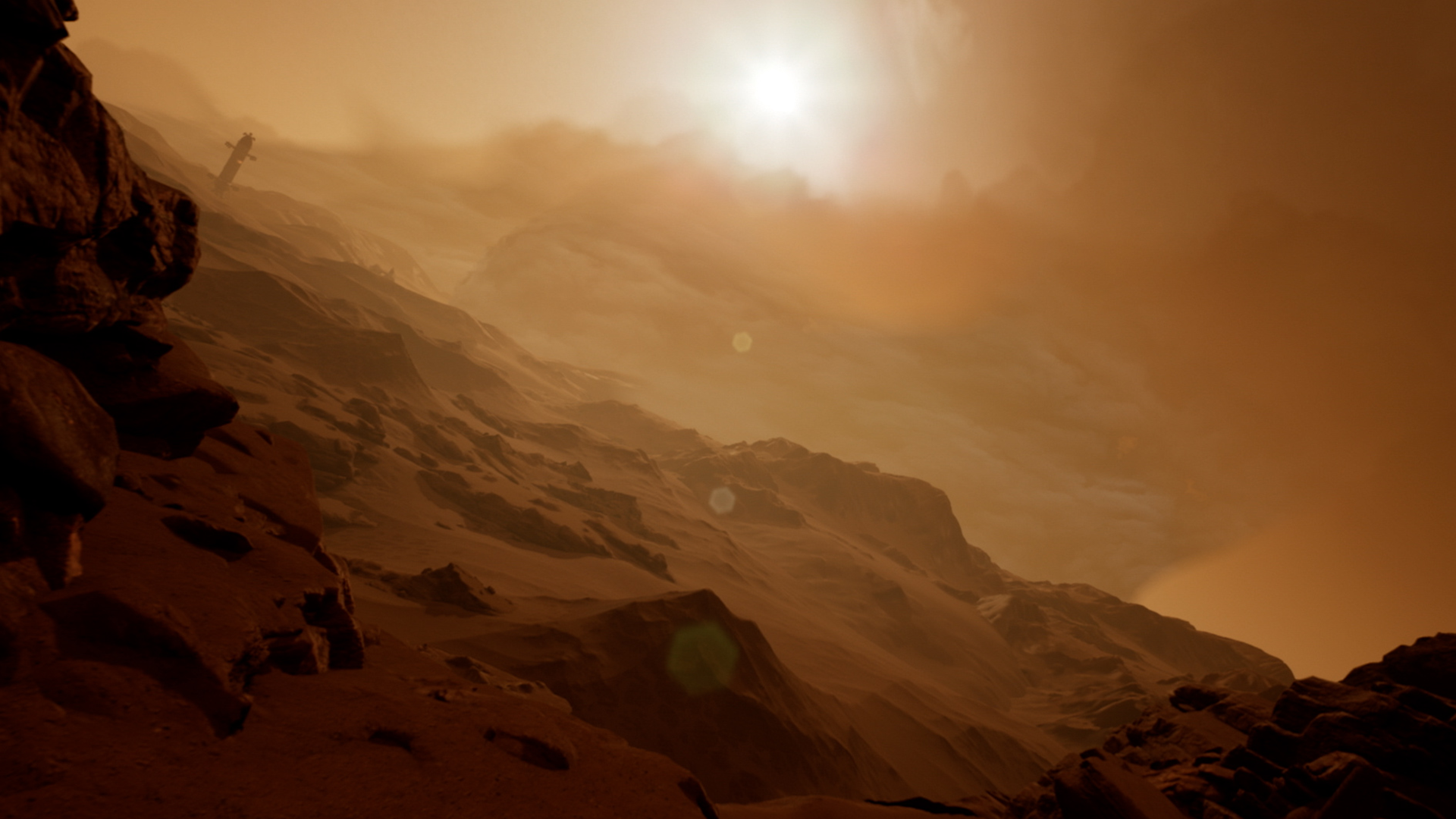
Space.com: Earlier on, you mentioned a few of the movies that resonated with you and inspired you. Are there any games that inspired or led you down a certain path for Deliver Us The Moon and Deliver Us Mars?
Koen: Yeah, and this is an interesting part. It’s not the game that we’d like to mimic, but the moment when you saw open space in Mass Effect 2, just to see space, and with the muffled sounds - that inspired us to think about how you would portray that.
But the funny part is that a realistic space approach is not done too often. I think Deliver Us The Moon got compared to things like Moonbase Alpha, but it’s funny that it’s not really spread around in this realistic fashion.

Space.com: Thanks very much for your time guys. We’ll close with asking, is there any message that you have for fans, or potential fans of the game?
Paul: Definitely, if there is some CEO watching that has some space on their spaceships, we have two attendees here. We would love to see it for real [laughs].
Koen: Yeah, my wife is not too fond of it, but I would take the ticket.
Paul: We started a game company because we thought we couldn’t do rocket science, but now we’re coming so close to the real thing that we’re kinda wanting to do it for real.
Koen: I hope people will enjoy the game once it is out, what we’ve made, because this team put their everything in, put in their heart and soul [...] Definitely enjoy it when it’s out.
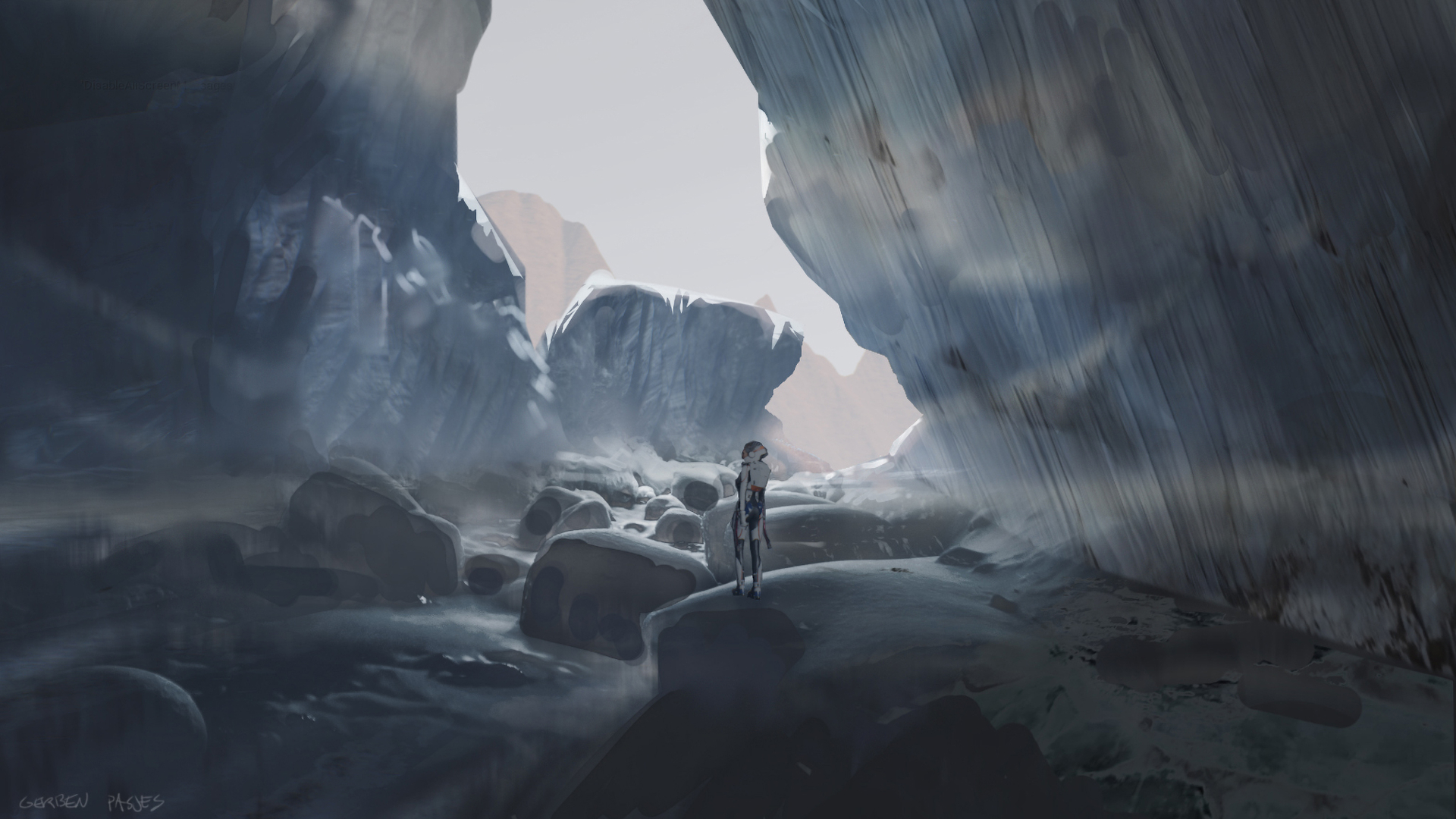
We want to say a huge thanks to Koen and Paul Deetman for taking the time to talk to us about their upcoming game. We were huge fans of Deliver Us The Moon when we played it a few years ago and we can’t wait to see more of the sequel.
We’d also like to thank Frontier Foundry for setting up this interview - they seem genuinely thrilled to be working with KeokeN on this. Speaking to our PR contact after the interview, he said that they still have “so much more to reveal. I think the scope of it will really surprise people. That’s just my two cents as PR, but behind the scenes it’s been really exciting to see what the guys have been working on and how it expands the scope over the first game.”
We don’t have a release date for Deliver Us Mars yet, but we’ll hopefully learn more about it in the coming weeks and months. In the meantime, if you want to see more great cosmic content, check out our guide to the best space exploration games.
Join our Space Forums to keep talking space on the latest missions, night sky and more! And if you have a news tip, correction or comment, let us know at: community@space.com.
Get the Space.com Newsletter
Breaking space news, the latest updates on rocket launches, skywatching events and more!
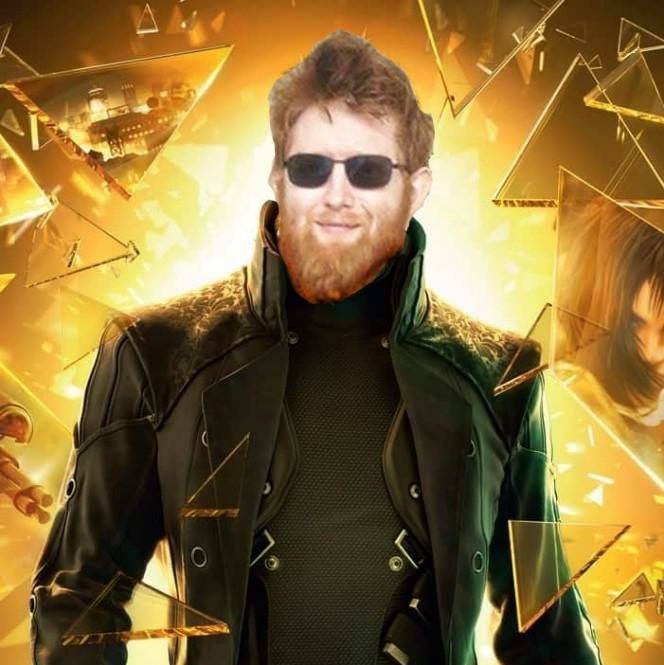
Ian is the Entertainment Editor at Space.com, covering movies, TV series, and games in the space and sci-fi realms. He's a massive sci-fi nerd and has been writing about games and entertainment for over eight years, with articles on sites like Space, LiveScience, GamesRadar, and more. With a degree in biology, a PhD in chemistry, and his previous role at the Institute of Physics Publishing, Ian is taking a world tour through the different scientific disciplines.










